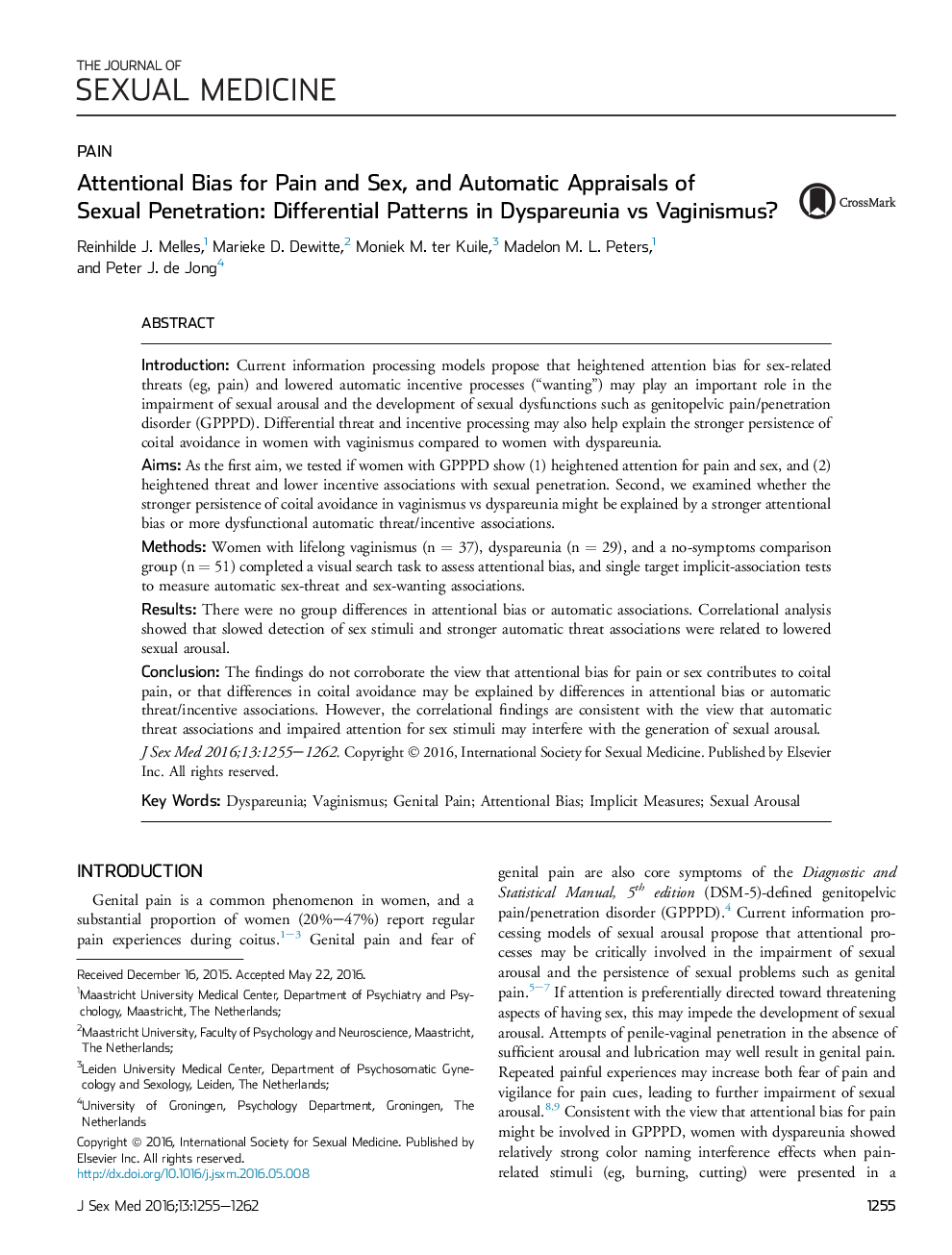| کد مقاله | کد نشریه | سال انتشار | مقاله انگلیسی | نسخه تمام متن |
|---|---|---|---|---|
| 4269006 | 1610829 | 2016 | 8 صفحه PDF | دانلود رایگان |

IntroductionCurrent information processing models propose that heightened attention bias for sex-related threats (eg, pain) and lowered automatic incentive processes (“wanting”) may play an important role in the impairment of sexual arousal and the development of sexual dysfunctions such as genitopelvic pain/penetration disorder (GPPPD). Differential threat and incentive processing may also help explain the stronger persistence of coital avoidance in women with vaginismus compared to women with dyspareunia.AimsAs the first aim, we tested if women with GPPPD show (1) heightened attention for pain and sex, and (2) heightened threat and lower incentive associations with sexual penetration. Second, we examined whether the stronger persistence of coital avoidance in vaginismus vs dyspareunia might be explained by a stronger attentional bias or more dysfunctional automatic threat/incentive associations.MethodsWomen with lifelong vaginismus (n = 37), dyspareunia (n = 29), and a no-symptoms comparison group (n = 51) completed a visual search task to assess attentional bias, and single target implicit-association tests to measure automatic sex-threat and sex-wanting associations.ResultsThere were no group differences in attentional bias or automatic associations. Correlational analysis showed that slowed detection of sex stimuli and stronger automatic threat associations were related to lowered sexual arousal.ConclusionThe findings do not corroborate the view that attentional bias for pain or sex contributes to coital pain, or that differences in coital avoidance may be explained by differences in attentional bias or automatic threat/incentive associations. However, the correlational findings are consistent with the view that automatic threat associations and impaired attention for sex stimuli may interfere with the generation of sexual arousal.
Journal: The Journal of Sexual Medicine - Volume 13, Issue 8, August 2016, Pages 1255–1262